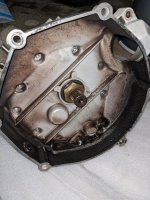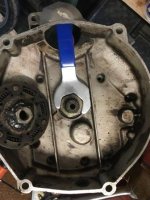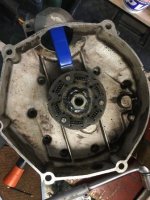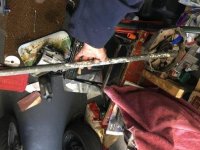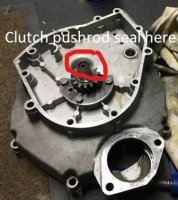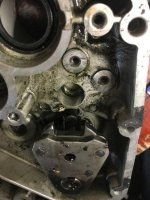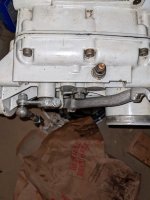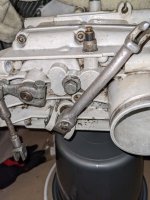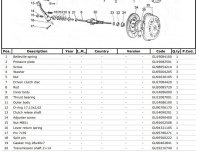Hi All,
Pulled the gear box and clutch assembly last night in order to replace the rear main seal and was hoping to do the same with the input shaft seal as well.
I didn't count on the rather large nut on the input shaft! What's the procedure for removing that bad-boy? I'm assuming you need to immobilize the input shaft, via the splines to get the nut moving?
Also, it looked like there was grease in the groove where the big circlip holds the cupped disc in place. When reassembling, should I smear a small amount if grease in that groove so the cup isn't dragging?
Assuming that the clutch friction disc splines, as well as the input shaft splines should get a tad of grease too? I was thinking of using Liqui Moly LM47...
One last question: I have an output shaft seal, and am hoping there is some easy way of replacing that without tearing down the gearbox?!
Thanks for your input!
Pulled the gear box and clutch assembly last night in order to replace the rear main seal and was hoping to do the same with the input shaft seal as well.
I didn't count on the rather large nut on the input shaft! What's the procedure for removing that bad-boy? I'm assuming you need to immobilize the input shaft, via the splines to get the nut moving?
Also, it looked like there was grease in the groove where the big circlip holds the cupped disc in place. When reassembling, should I smear a small amount if grease in that groove so the cup isn't dragging?
Assuming that the clutch friction disc splines, as well as the input shaft splines should get a tad of grease too? I was thinking of using Liqui Moly LM47...
One last question: I have an output shaft seal, and am hoping there is some easy way of replacing that without tearing down the gearbox?!
Thanks for your input!

